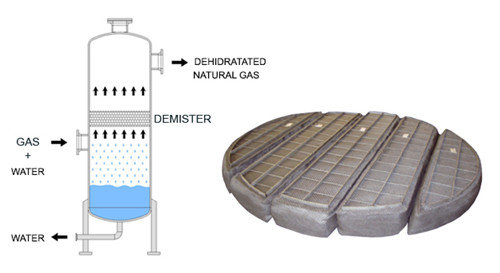Droplet separation with demister pads is a widely used method in various industrial applications. Demister pads, also known as mist eliminators or mist pads, are specifically designed to remove liquid droplets from gas or vapor streams. Here’s how droplet separation with demister pads works:
Coalescence: Upon impingement, the liquid droplets on the demister pad surface begin to coalesce with each other. The proximity of the droplets and the surface tension forces acting between them facilitate the coalescence process. As the droplets merge and combine, they form larger and heavier droplets.
Gas or Vapor Passage: While the liquid droplets are captured and drained by the demister pad, the gas or vapor stream can pass through the pad relatively unobstructed. The design of the demister pad ensures that it provides minimal resistance to the gas flow, allowing the gas or vapor to continue its passage.
The efficiency of droplet separation with demister pads depends on several factors, including the pad material, pad thickness, pad geometry, gas or vapor velocity, and droplet size distribution. The choice of demister pad type and design is optimized to achieve the desired separation efficiency while minimizing pressure drop and ensuring proper gas or vapor flow.
Demister pads find applications in various industries, including oil and gas processing, chemical plants, power generation, and wastewater treatment. They are commonly used to remove liquid droplets from gas streams, protect downstream equipment, improve product quality, and comply with emission regulations.
